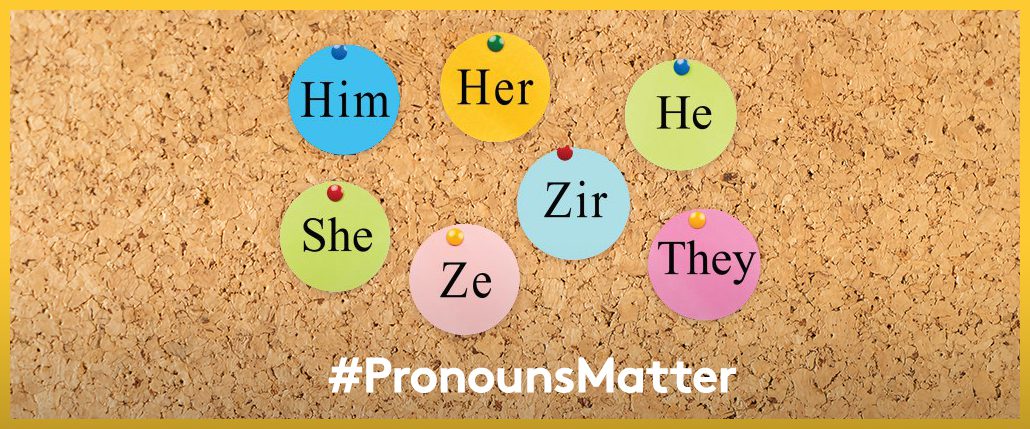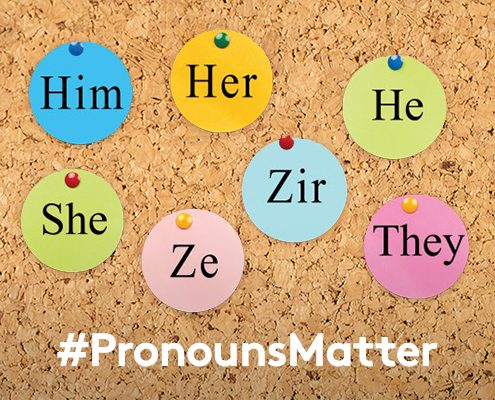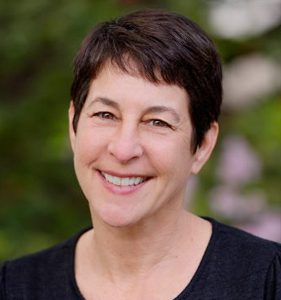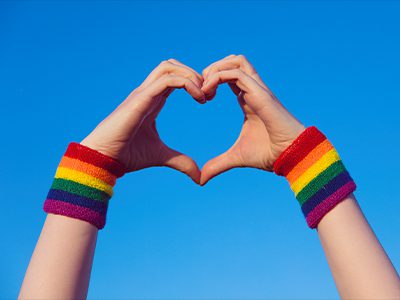The Importance of Correct Gender Pronouns

The Importance of Correct Gender Pronouns
Pronouns are important! We use them daily when we interact with people and also when we refer to someone in the third person. But, when we use a pronoun, there is an implied gender which may not always be accurate. So even if you think you know a person’s gender, it just isn’t polite to assume.
If you aren’t sure about someone’s pronouns and you are not in a place where it feels safe to ask, then a good default position is to use “they/them/theirs.” People may feel a bit uncomfortable at first with “they/them/their” pronouns because it can be viewed as a plural term for a singular person. But we actually use “they/them/their” quite often! For example, you might say, “Someone’s at the door. I wonder what they want?”
If you make a mistake, or incorrectly assume someone’s pronouns without asking first, you might be sending a hurtful message even if your intentions are good. Taking the time to use a person’s correct gender pronouns is one way you can show your respect for their identity.
You might feel unsure about how to best ask someone for their pronouns. Here are a few suggestions you can use to show that you want to be inclusive and respectful when meeting someone new:
1. Offer your pronouns first
Let’s normalize offering pronouns when we offer our names! If pronouns are not offered, it is implied that a person’s gender matches their gender expression – but that might not always be the case. A person’s gender can be expressed through their name, pronouns, clothing, or haircut. Some people’s gender expression does reflect their gender identity but sometimes it does not.
Offering your pronouns when you meet someone new conveys that you want to be inclusive and that you are a safe person for an LGBTQ+ individual to engage with,
Example: “Hi, I’m Taylor and I use he/him/his pronouns. How about you?”
2. If you are going to ask someone about their pronouns, ask in private
You never want to put someone else on the spot so you shouldn’t ask someone about their pronouns if you are in a big group of people. If you can take a moment away from the group, then you can politely make the inquiry.
Example: “I want to share with you that I use she/her/hers pronouns. If you are comfortable sharing, may I ask which pronouns you use?”
3. Use their pronouns
Once you have met someone and they shared their pronouns, then you should use them! If this is new to you, that is ok but you should still make the effort. You can practice in your head or aloud when you are alone in your car or room. And if you do make a mistake, calmly apologize, make the correction, and move on. And if someone else makes a mistake and misgenders someone, politely make the correction as well.
Example: Mistaken Person: “Oh, I see Dylan left her jacket on the chair. I will go give it to her.”
Enlightened You: “That’s very nice of you! And, remember, Dylan uses the pronouns they/them/their.”
4. What if a person is nervous about sharing their pronouns?
A person’s safety and well-being is the most important consideration of all. If someone doesn’t want to share their public pronouns they absolutely do not have to! No one should ever be made to feel pressured to divulge anything personal at any time, or at any place – no exceptions.
5. What if a person doesn’t know their pronouns?
It is absolutely understandable to feel confused or uncertain about your own gender identity. A person can feel quite certain one day about their gender identity and wake the next day and feel utterly uncertain. People need the space and time to realize what feels most affirming to them. Labels can be a helpful tool to describe gender identity but they are not required!
Want to learn more about the LGBTQ+ community? Please join us! Kaleidoscope offers free groups and clubs for teens ages 12-17 and young adults 18-24. We also have a free bi- monthly parent/ally/caregiver support group.



